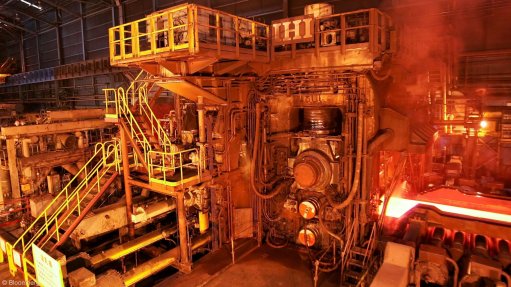
Key investor advisory groups are divided on whether Rio Tinto shareholders should support a demand for the world’s No. 2 miner to extend the range of its targets to reduce greenhouse gas emissions.
Institutional Shareholder Services (ISS) is recommending Rio investors support a resolution tabled by an advocacy group calling on the producer to add additional targets, including so-called scope 3 emissions -- those generated by customers through the use of its products. In contrast, Glass Lewis & advises holders to reject the plan at an annual meeting on Thursday.
The division highlights a debate in the mining and energy sectors on the extent to which raw materials companies bear responsibility for emissions created when customers, such as steel mills, use their products. BHP Group has pledged to set goals for its scope 3 footprint later this year, and Royal Dutch Shell last month set out plans to cut the same category of emissions by 65% by 2050.
Shareholders “have a long-term interest in assessing whether Rio Tinto is adequately assessing and acting on its climate risk and opportunities,” including through “targets to work with its customers to achieve reductions in its scope 3 emissions,” ISS said in an April 30 note to clients, recommending they vote in favor of the proposal submitted by environmental campaign group Market Forces and a small group of investors. Rio has advised investors to vote against the proposal.
London based-Rio argues that unlike competitors who produce fossil fuels and can potentially supply less-carbon intensive alternatives, it has little capacity to address the emissions created by its customers. The company’s scope 3 emissions are generated mainly when its iron ore is used in China’s steel mills, or bauxite is consumed in the aluminum-making process.
“Our ability to directly influence our customers’ emissions is limited,” Peter Toth, Rio’s global head of corporate development, told an investor meeting last month. “It is even difficult to accurately quantify their emissions and so our strategy is to work in partnership across these value chains.”
The producer is collaborating with China Baowu Steel Group and Tsinghua University in Beijing to curb pollution in the steel sector, which accounts for about 7% of all global emissions.
Direct annual emissions from Rio’s operations are about 31.8-million tons of carbon dioxide equivalent, compared with the company’s estimate of about 491-million tons of emissions in its wider supply chain, the miner said earlier this year.
Rio said in February it would seek to cut emissions from its own businesses by 15% on 2018 levels by 2030, will target net zero emissions by 2050 and spend $1-billion over the next five years on the efforts.
While the producer should continue to reduce its own emissions, it’s probably not “feasible for the company to set goals based on how its customers determine to utilize its products,” Glass Lewis said in a note to clients last month. The producer has made “extensive disclosure on the steps it is taking to mitigate its environmental impact,” according to the adviser.